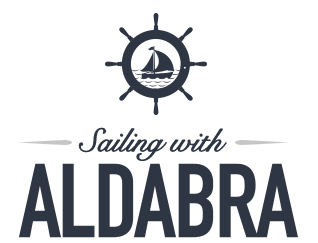Cyclone season in the South Pacific is from November to April. So my plan for this first season was to keep the boat in Tahiti. I had originally planned to keep the boat in Marina Papeete but the opportunity in Port Phaeton seemed worth trying. My sister Wendy and my brother-in-law Pat agreed to come back to Tahiti to help me with the decommissioning.
Wendy and Pat arrived in the early morning on Sunday, October 23. They took a taxi to Marina Taina and I picked them up at the dock. After they got settled on the boat, we returned to the marina for lunch (poisson cru) at La Casa Bianca. Later that evening we had sundowners on Rhapsody.
The next day was quite windy. We took the dinghy to the marina dock and walked to the Carrefour to buy a few provisions. Then we went back to the boat, pulled up anchor, and went to the nearby airport anchorage. The purpose of the move was to get a little closer to the Papeete pass to cut time off the trip to the boatyard, where we were to haul out for a couple of days. The anchorage was crowded and the conditions were rowdy, but we found a spot to fit in for one night. That night the wind howled. I didn’t turn on the instruments to measure the speed, but the wind generator was screaming so I knew it was probably well above 30 knots.
The next morning at the break of day it was still blowing over 20 knots but we picked up the anchor and started heading out of the Papeete pass and north toward the next pass. We were motoring against the wind but making decent headway. We went into the pass, turned right and started heading toward the Technimarine boatyard. They saw us as we arrived a half hour early and flagged us over to enter their slip in preparation for haulout.
The haulout and move into the yard went very well. The guys noticed spots under the keel and rudder that needed touchup. (We had touched bottom on the last trip to Moorea.) So while they focused on that, Pat and I worked on our initial purpose for the haulout, which was a broken thru-hull valve. We determined that the thru-hull itself did not need replacement so Pat removed the valve and replaced it with a new one. I went around to all the other valves and tested them, lubing the ones that needed it. I also cleaned the barnacles off the boat bottom, shaft and prop, greased the prop and put new zincs on the shaft and strut. Pat removed the speed/depth transducer, cleaned it up and replaced it. We removed the forward-scanning transducer, cleaned it up and left the blank in because we won’t need it until after cyclone season. We also took the windlass apart to inspect it, determinging that it has a broken spring that needs to be replaced. In the evenings we walked closer to downtown Papeete for restaurant meals before settling in for our boatyard slumber.

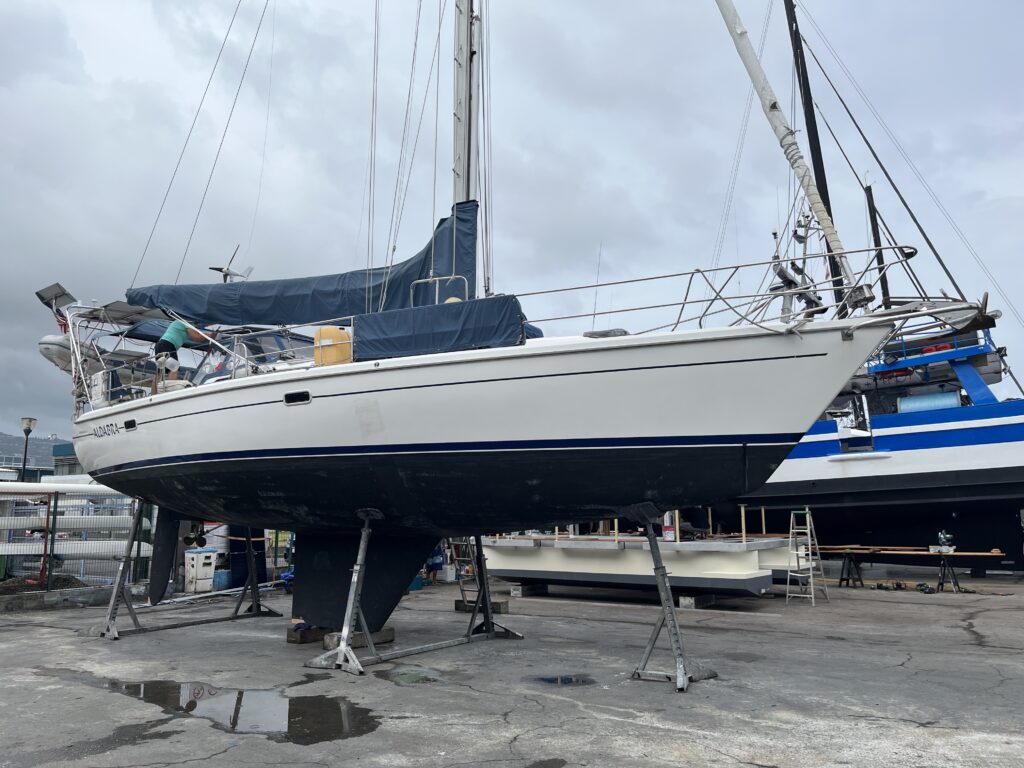
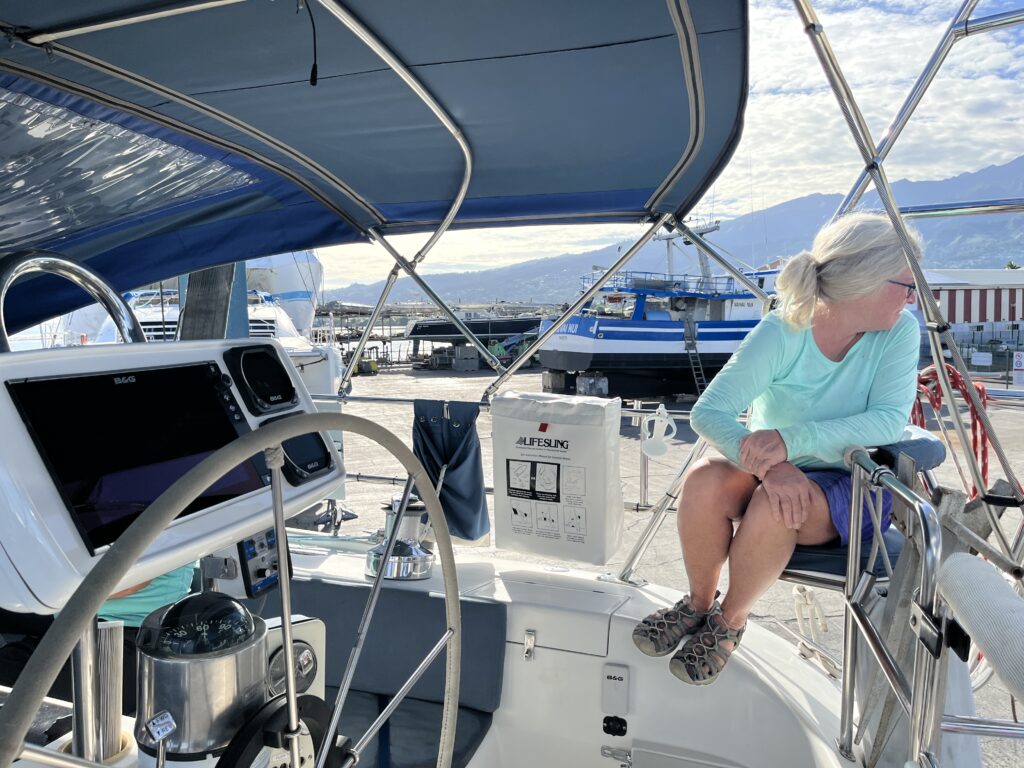
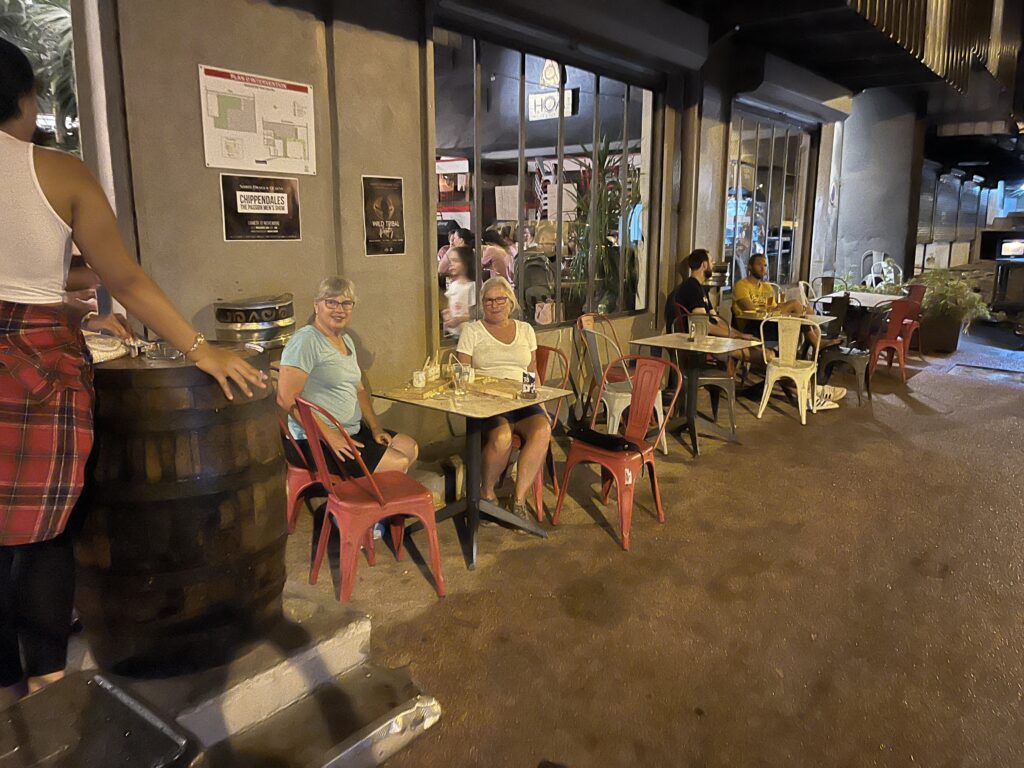
On Thursday, we splashed back into the water at 8:00 a.m. and headed out of the pass and over to Moorea, arriving in Cooks Bay before noon. The idea was to give Pat and Wendy a chance to explore Moorea before heading back over to Port Phaeton to decommission. But the weather didn’t invite a return crossing as soon as I had planned, so we tried to get work done while at anchor in Moorea. We did a nice hike in the rain at the park where the Belvedere lookout is, and we toured the island for a day in a rental car. We also walked around the east side of the bay a few times, stopping for lunch.
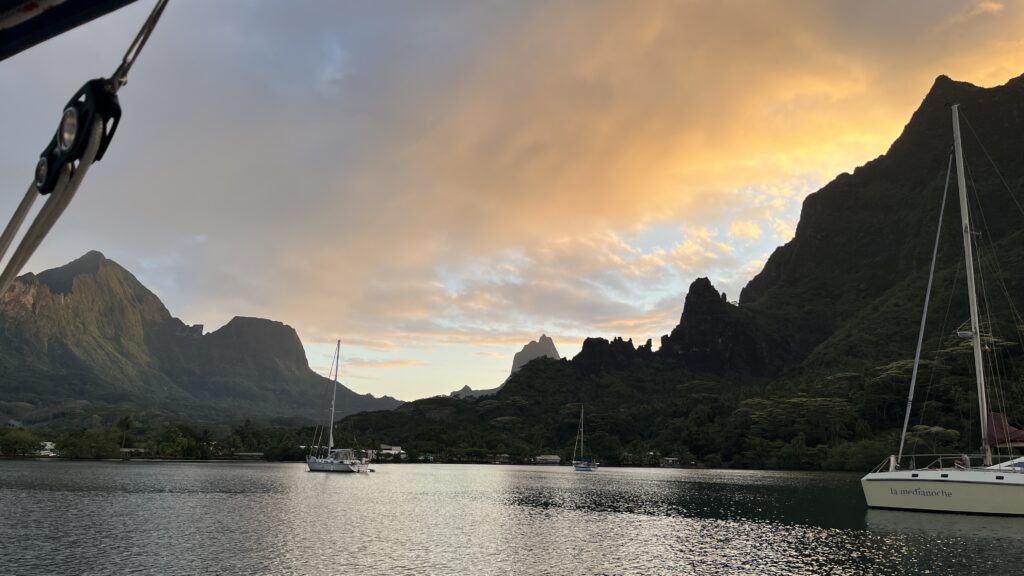
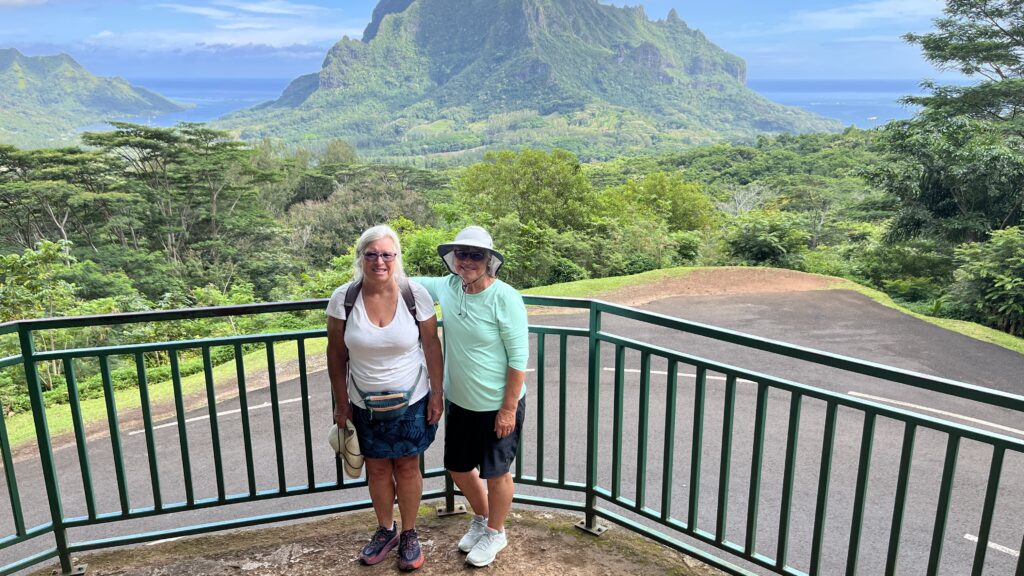
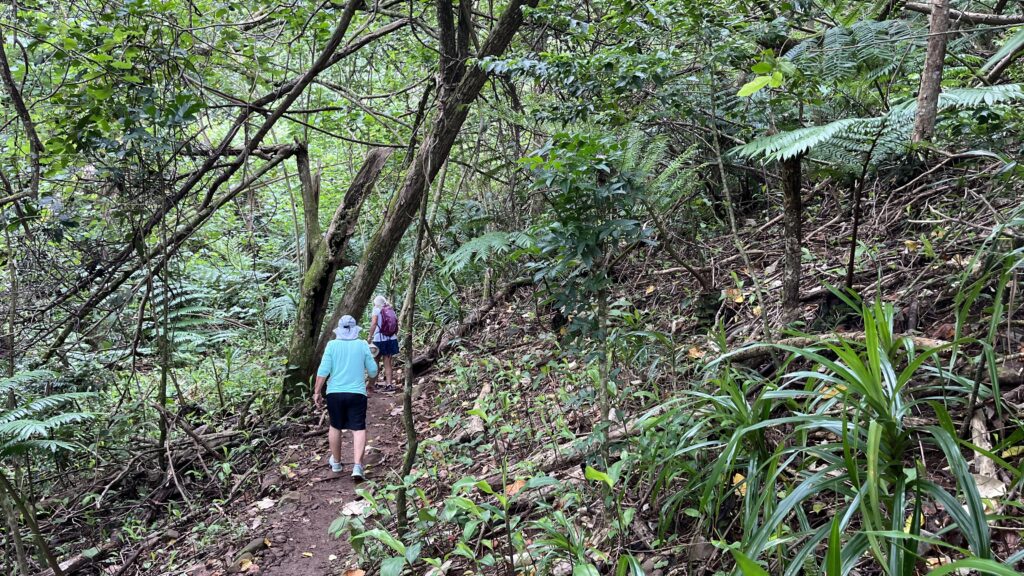
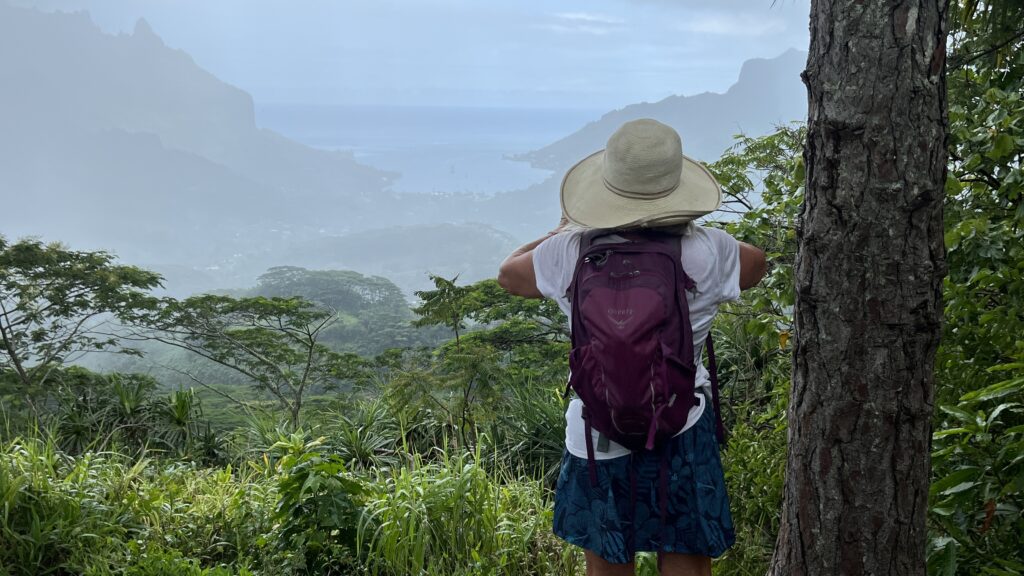
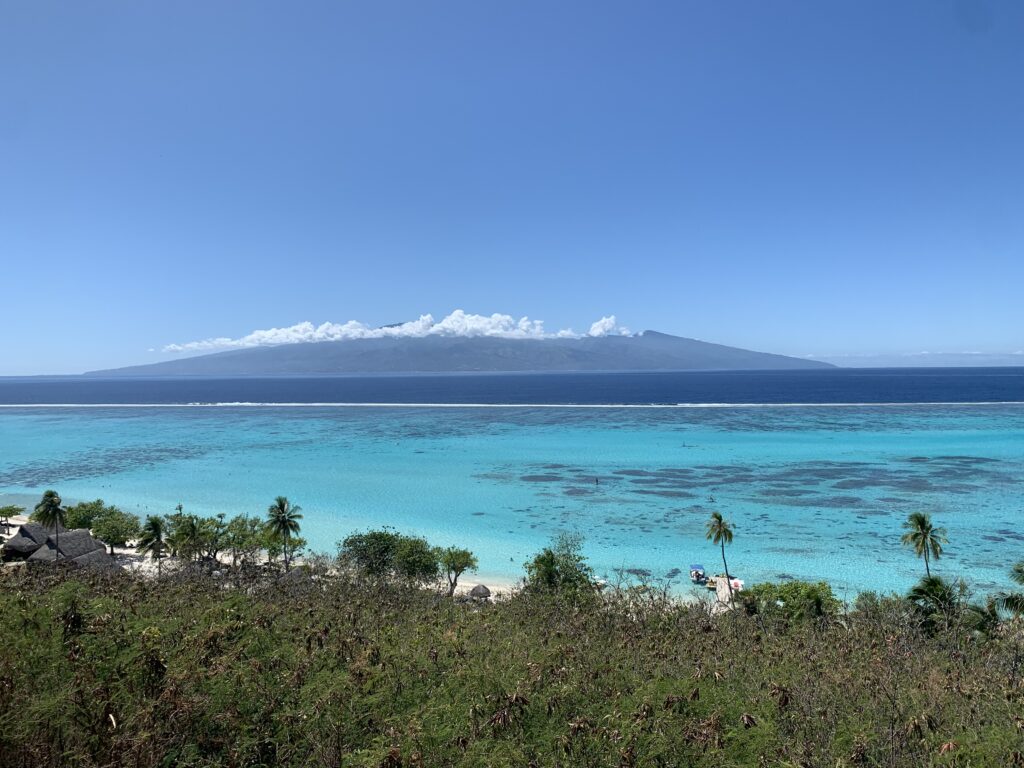
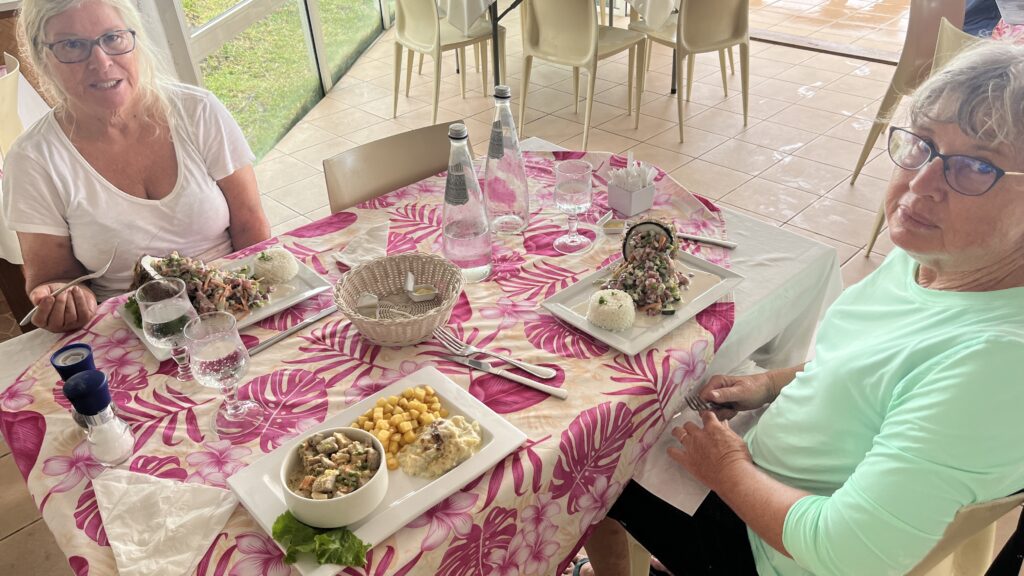
Otherwise, we did boat projects. We inspected the two jibs and put tape on the sacrificial cloth that covers the primary jib. (Both need to go in for repairs when I return.) Pat repaired a seam on the bottom of one of the kayaks. We removed everything from the most forward compartment in the bow, where some water had entered. We dried out the compartment and the gear before restowing it. We dried out the spinnaker, which had been stored on deck, and put it down below. Wendy polished all of the stainless steel railing. Pat worked on unclogging the aft shower sump, which had been draining too slowly. We hoisted the dinghy up on deck and cleaned the bottom. I mended the dinghy chaps.
After eight days in Moorea, we pulled up anchor on Friday morning, November 4. It wasn’t a good day to leave but I couldn’t see a better day in the forecast. The bay was calm, but once outside, we had 20+ knots of wind on the nose. We motored into the wind and seas, making less than 2 knots of headway. The first two or three hours were a slog but conditions did improve and we started to go a bit faster. We went into Papeete pass and then made our way down to the Taina anchorage, anchoring about 4:30 p.m.
The next morning, we left the anchorage at 6:00 a.m. and motored around the island to Port Phaeton. There was no wind and the seas were glassy until the last five miles. Then we got 20+ knots of wind on the nose and white-out rain as we made our way toward the pass and into the lagoon, picking up the mooring ball before noon.
The next day, Sunday, the real work began. Between rain squalls, we dried out the main and refolded it and dried out the jib, took it down, folded it and put it inside the boat. We took a lot of the hardware off the boat and covered anything we couldn’t remove. We washed the cockpit cushions, dried them out and put them down below, along with all the empty fuel jugs. Pat fixed a couple of hatch leaks.
On Monday, we took the bus on a two-hour trip to the airport and picked up a rental car. We then drove into the marine/industrial area to a marine store before heading back to Port Phaeton. Once there, we loaded up the car and headed a short distance away to do laundry. On Tuesday, I met with Marc Bordas who will be taking care of the boat during the next few months. Pat replaced the breaker for the bilge pump and then replaced the bilge pump itself. The next day, Wendy wiped down the interior walls with vinegar and I cleaned out the freezer/refrigerator boxes and threw out food. We cleaned the heads. We pickled the watermaker. We collapsed the bimini and zipped it into its cover. We tied a line around the main to keep it from catching air during high winds. In the past I’ve removed the dodger windows during hurricane season. This time, I left them intact, so we shall see what happens.
Finally on Thursday, we completed our packing, closed almost all the thru-hulls and put a variety of desiccants throughout the interior of the boat. They won’t keep moisture out of the boat but perhaps they’ll help prevent some of the mildew that will develop. I then discovered that the stern compartment with all the fishing gear was flooded, so we took all that gear out and tried to dry it and clean it up before putting it inside the boat. After shuttling Wendy and all our bags to shore to load the rental car, Pat and I returned to the boat, hoisted the dinghy motor onto the boat and then hoisted the dinghy onto the foredeck. We put its cover on and tied it down. With the boat completely closed up, we waited in the rain for Marc to pick us up in his dinghy. He shuttled us to shore and we left the boat in his care. He’ll open it up once a week when it’s not raining. And he’ll check the battery voltage and the bilge as well as the mooring lines.
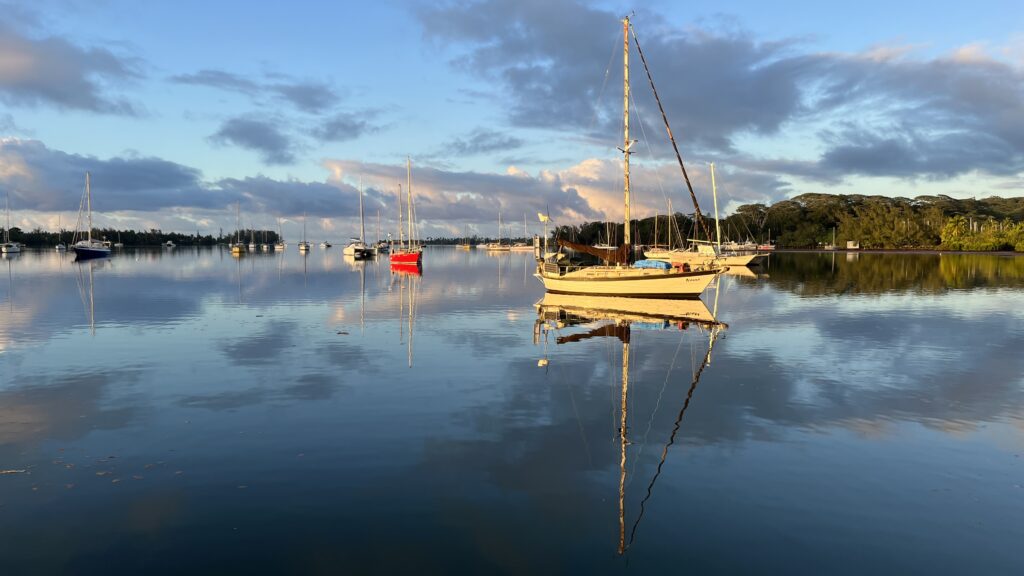
After leaving the boat, Pat, Wendy and I drove to the Hilton Hotel near the airport and checked in with all the gear I was taking back with me. (I hate to leave my computers and electronics on the boat, so it all had to go to California.) We had a nice dinner and got to sleep in real beds. It was my first time sleeping off the boat in seven months. The next day we walked into town and back before taking some pool time.
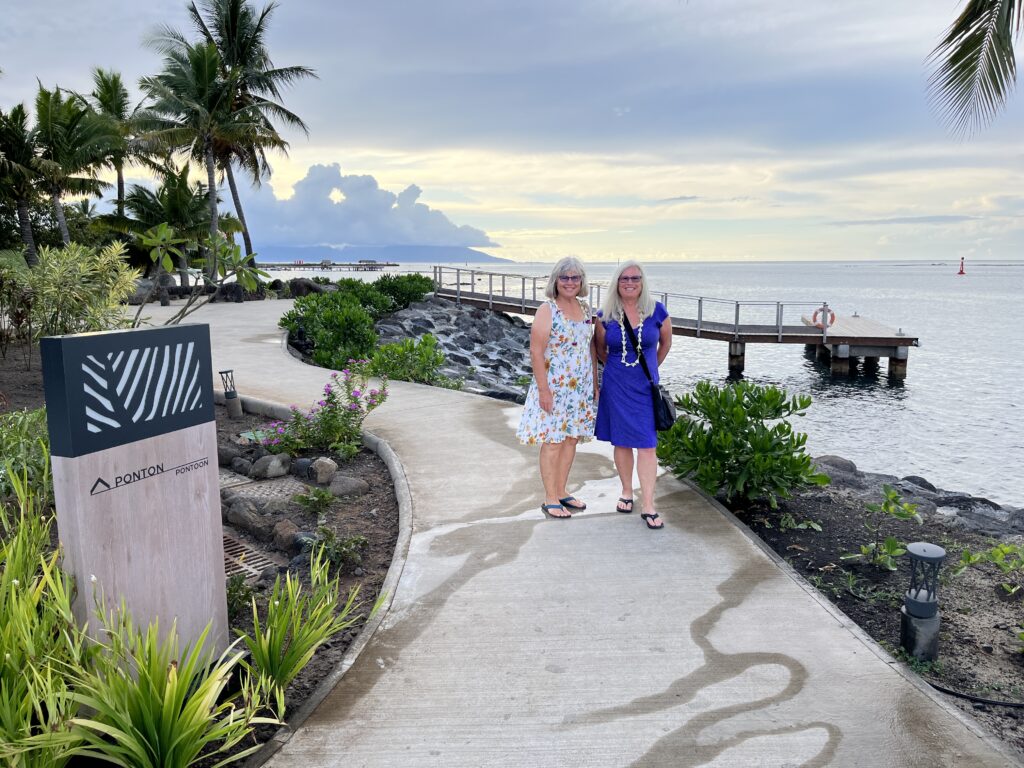
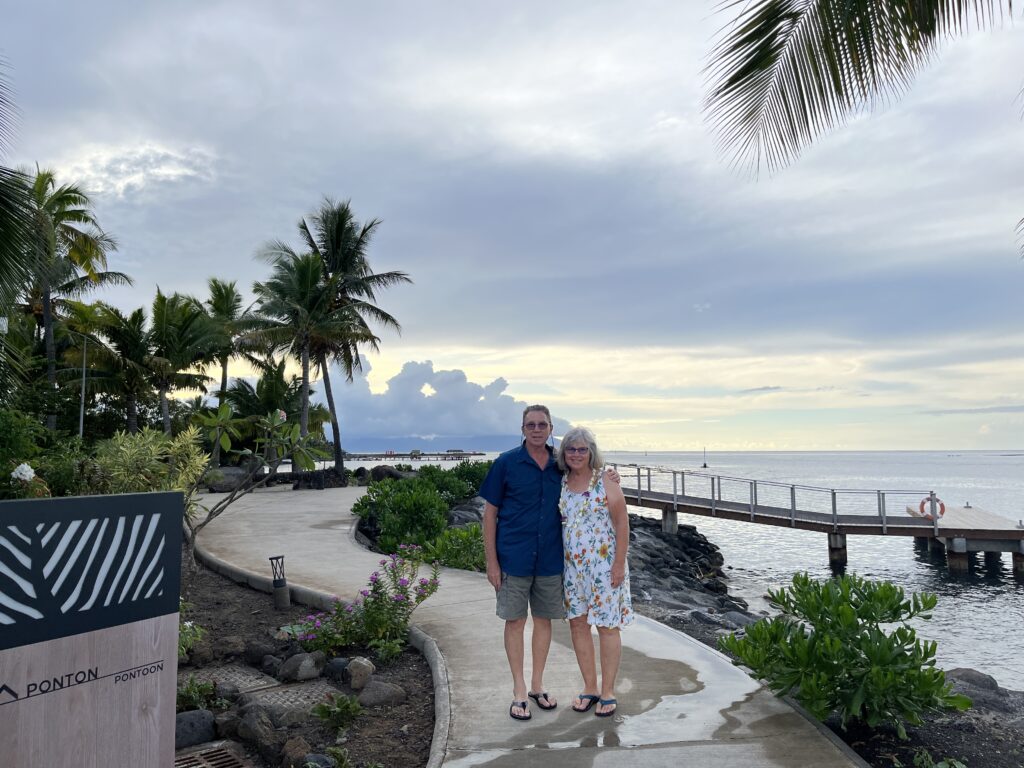
After another nice dinner and good sleep, we headed off in the early morning for the airport, turned in the rental car and boarded a plane. The plane made it part way to California before turning back for a medical emergency. We set off again five hours after our first departure, this time making it all the way to Los Angeles. I’ve never been through Immigration and Customs so fast in L.A. before, but it was a breeze. We then quickly got into a rental car and I slept all the way to Pat and Wendy’s house in Escondido.
So begins cyclone season. Monitoring the weather in Tahiti. Ordering boat parts. Visiting with family and friends. Squeezing in annual medical appointments. And planning the next season in French Polynesia.
